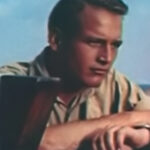Known for his steely blue eyes, advocacy of numerous charities, and exceptional onscreen skills, Paul Newman cultivated a film career that made him one of the most renowned figures in Hollywood. Newman began his rise toward stardom in the 1950s, appearing in a number of films that are now deemed classics, including “Cat on a Hot Tin Roof,” “Butch Cassidy and the Sundance Kid,” “Cool Hand Luke,” and “The Hustler.” Beyond the sheer breadth of his movie career, perhaps one of the most fascinating aspects of Newman’s long career is the variety of roles that he so aptly filled. Known for playing the classic cowboy in films such as “The Sting” and “Butch Cassidy and the Sundance Kid,” Newman also capably portrayed other roles, such as that of a businessman and even a swindler. Unlike many actors, Newman’s career remained strong, and he continued to make films well into his golden years.
Although it was certainly not his first film, “Somebody up There Likes Me” proved to be the first breakout hit for Newman in 1956. Portraying the role of Rocky Graziano, Newman received critical acclaim and praise. James Dean was originally slated to play the role of boxing legend Graziano; however, he died prior to filming, and Newman was asked to fill the role. The film went on to win two Academy Awards.
Two years later, Newman starred opposite Elizabeth Taylor in “Cat on a Hot Tin Roof.” The movie was a hit at the box office and earned Newman his first Academy Award nomination. That same year, he starred with Joanne Woodward in “The Long, Hot Summer,” a film that earned him a Best Actor award at the 1958 Cannes Film Festival. He and Woodward married later that year and remained married until his death in 2008. The couple appeared together in a string of projects over the course of the next fifty years.
By this time, Newman had become firmly cemented as one of the hottest stars in Hollywood and was able to successfully transition from the cinema of the 1950s to that of the 1960s, a feat that few actors were able to accomplish. Beginning in 1960, Newman starred in a string of films, including “Exodus,” “The Hustler,” and “Hombre.” Filmed in New York, “The Hustler” is about a small-time pool hustler known as “Fast Eddie,” a role portrayed by Newman. The film achieved both popular and critical success and quickly became a modern classic.
In 1967, he played the title role of Luke, a prisoner who is sentenced to a two-year prison term at a chain-gang facility in Florida. “Cool Hand Luke” became an iconic movie in film history and was selected by the United States Library of Congress to be preserved in the National Film Registry.
Two years later, Newman appeared with Robert Redford in “Butch Cassidy and the Sundance Kid.” The western relates the tale of two well-known outlaws as they run from the law while trying to make their way to Bolivia. Ultimately, the film went on to win four Academy Awards and, like “Cool Hand Luke,” was chosen to be preserved in the National Film Registry.
In 1969, Newman also appeared in “Winning,” a film about a professional race car driver. To prepare for the role, Newman was trained by a motor sport driver. This led to Newman competing in races in his real life. At the age of seventy, he participated in the 24 Hours of Daytona, and, ten years later, he was still racing.
Newman’s film career remained highly successful well into the 1970s and included a number of hits. In 1973, he appeared in “The Sting” with Robert Redford. Set in 1936, the film tells the tale of two grifters. Following its release, the movie was noted for its use of ragtime music. “The Sting” proved to be highly successful at the Academy Awards, garnering no less than ten Oscar nominations and leading to ten wins, including Best Director, Best Original Screenplay, and Best Picture.
Newman transitioned effortlessly into the 1980s and starred in “The Color of Money” in 1986. It was this film, a sequel to “The Hustler,” for which Newman finally won an Oscar for his reprisal of the role of Fast Eddie. Taking place some twenty years after “The Hustler” left off, Fast Eddie finds himself training an entirely new team of pool hustlers.
Throughout the 1990s, Newman appeared in a number of films, including “Message in a Bottle.” His last screen appearance was in 2002 when he appeared in “Road to Perdition” with Tom Hanks. He continued to provide voice work for several films prior to his retirement in 2007. Newman died the following year.



